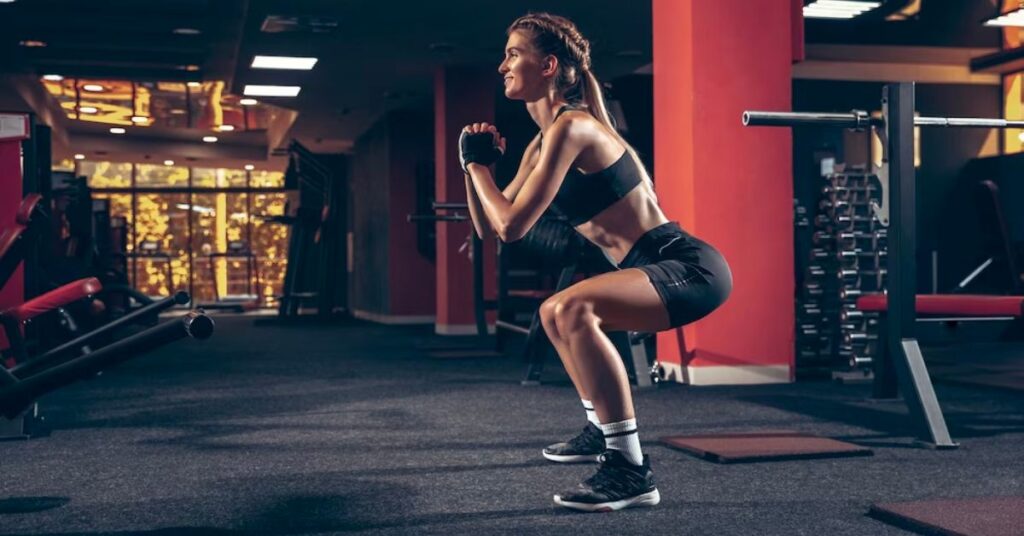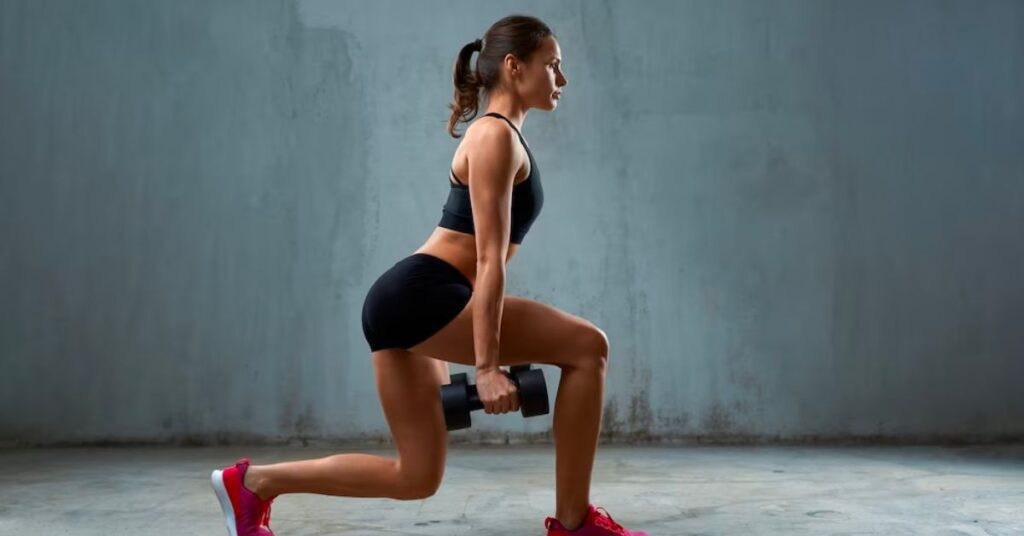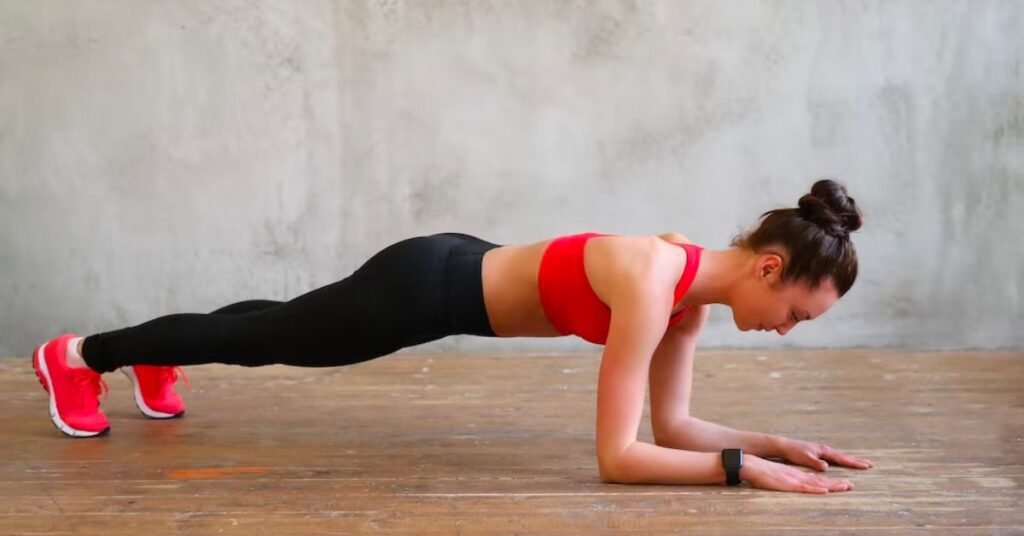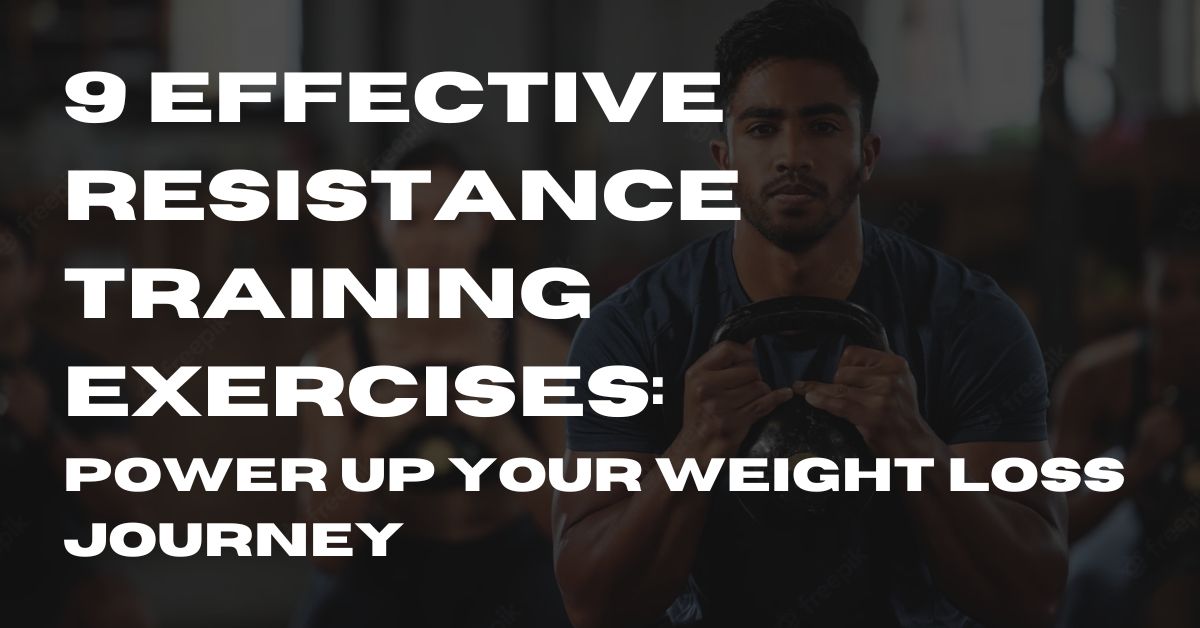Are you struggling to shed those extra pounds and wondering if there’s a more effective way to reach your weight loss goals? As an expert weight loss trainer, I am here to tell you that resistance training might just be the missing piece of the puzzle.
In this article, we will explore the powerful relationship between resistance training and weight loss, revealing how this form of exercise can enhance your journey towards a leaner, healthier body. By understanding the purpose and objectives of incorporating resistance training into your routine, you’ll be equipped with valuable knowledge that can revolutionise your approach to weight loss.
So, let’s delve into the world of resistance training and discover its remarkable benefits for achieving sustainable weight loss.
The Benefits of Resistance Training
Resistance training, also known as strength training or weightlifting, offers a myriad of benefits that go beyond just building muscle. If you’re looking to maximize your weight loss efforts and achieve lasting results, incorporating resistance training into your fitness routine is a game-changer. Let’s explore six key benefits supported by research and evidence:
1. Accelerated Fat Burning:
One of the significant benefits of incorporating resistance training into your weight loss journey is its remarkable ability to accelerate fat burning. While traditional aerobic exercises like running or cycling primarily burn calories during the activity, resistance training offers a unique advantage.
Multiple studies have demonstrated that resistance training can significantly increase post-exercise energy expenditure, resulting in a greater calorie burn throughout the day. In fact, a study published in the Journal of Strength and Conditioning Research discovered that individuals who engaged in resistance training experienced higher resting metabolic rates compared to those who didn’t.
This prolonged elevation in metabolism means that your body continues to burn calories even after you’ve finished your resistance training session, promoting efficient fat loss.
2. Enhanced Muscle Mass:
Building lean muscle mass through resistance training is an essential component of sustainable weight loss. Unlike fat tissue, muscle tissue is highly metabolically active, meaning it burns more calories even at rest.
Research published in the American Journal of Clinical Nutrition found that increasing muscle mass through resistance training resulted in a higher resting metabolic rate, leading to greater fat oxidation.
In other words, by stimulating muscle growth and increasing your muscle-to-fat ratio, resistance training not only helps you burn calories during your workouts but also elevates your metabolic rate in the long term.
This increased metabolic rate creates a foundation for effective weight management and aids in maintaining your weight loss goals.
3. Overcoming Weight Loss Plateaus:
Weight loss plateaus can be frustrating and discouraging, but incorporating resistance training into your routine can help you break through these stagnant phases. Resistance training introduces new challenges to your muscles, stimulating further adaptations and reviving your metabolism.
For instance, integrating high-intensity interval training (HIIT) into your resistance workouts has been shown to significantly increase fat oxidation and improve body composition (*). Additionally, implementing variations such as Push, Pull, Legs (PPL) splits or circuit training keeps your workouts dynamic and prevents plateaus by constantly challenging your muscles and promoting continuous progress.
By incorporating these strategies, you can overcome weight loss plateaus and reignite your progress towards your desired weight.
4. Improved Body Composition:
Resistance training is not only beneficial for weight loss but also plays a crucial role in improving your body composition. Research published in the ResearchGate has demonstrated that combining resistance training with a hypocaloric diet (calorie deficit) leads to a significant reduction in body fat while preserving lean muscle mass.
By reducing body fat and increasing muscle definition, resistance training helps sculpt your body, giving you a toned and well-defined physique. Moreover, the improved strength and posture gained through resistance training contribute to better overall body composition and enhance your physical performance in daily activities.
5. Increased Energy Expenditure:
Resistance training offers a unique advantage over traditional aerobic exercises when it comes to post-workout calorie burn. The phenomenon known as excess post-exercise oxygen consumption (EPOC) refers to the increased oxygen consumption and calorie expenditure that occurs after a workout.
A study published in the Journal of Applied Physiology found that resistance training elicits a more prolonged EPOC response compared to aerobic exercise, resulting in higher total energy expenditure over a 24-hour period.
This extended calorie burns aids in creating a calorie deficit, which is crucial for effective weight loss.
6. Customisability and Variety:
One of the remarkable aspects of resistance training is its versatility, allowing you to tailor your workouts according to your preferences and goals. Whether you choose traditional weightlifting, bodyweight exercises (calisthenics), or resistance bands, you have the flexibility to customize your training routine.
For example, a study published in the Journal of Sports Medicine and Physical Fitness compared the effects of weightlifting and resistance band training on body composition and found similar improvements in strength and body composition with both methods.
Moreover, resistance training can be combined with other forms of exercise, such as aerobics or cardio, to create a well-rounded fitness routine that addresses various aspects of physical fitness.
Pairing resistance training with a balanced diet, such as a vegan meal plan or a keto diet, and incorporating healthy options like smoothies or juices further optimizes your weight loss journey by providing the necessary nutrients and supporting overall well-being.
How Resistance Training Promotes Weight Loss
Resistance training, also known as strength training or weightlifting, is a powerful tool for promoting weight loss. It involves performing exercises that challenge your muscles against an opposing force, such as weights, resistance bands, or your body weight. While many people associate cardio exercises with weight loss, incorporating resistance training into your fitness routine offers numerous benefits that can help you shed pounds and achieve your weight loss goals.
One way resistance training promotes weight loss is by increasing your resting metabolic rate (RMR). Your RMR refers to the number of calories your body burns at rest to maintain basic physiological functions.
Research has shown that resistance training can elevate RMR, leading to a higher calorie burn throughout the day. In fact, a study published in the Journal of Transitional Medicine found that individuals who engaged in resistance training experienced an increased RMR compared to those who didn’t.
This means that even when you’re not actively working out, your body continues to burn calories at a higher rate, supporting weight loss.
Another mechanism through which resistance training promotes weight loss is by preserving and building lean muscle mass. Muscle tissue is more metabolically active than fat tissue, meaning it burns more calories even at rest. By engaging in regular resistance training, you stimulate muscle growth and prevent muscle loss that often occurs during weight loss efforts (*).
This is particularly important because losing muscle mass can lower your RMR and make weight loss more challenging. A study published in the American Journal of Clinical Nutrition demonstrated that combining resistance training with a reduced-calorie diet resulted in greater fat loss and preservation of lean muscle mass compared to diet alone.
By maintaining or increasing your muscle mass through resistance training, you support a higher metabolic rate and optimize your weight loss efforts.
In addition to increasing RMR and preserving muscle mass, resistance training can also help create a calorie deficit, which is necessary for weight loss. To lose weight, you need to consume fewer calories than you expend. While aerobic exercises like running or cycling primarily burn calories during the activity, resistance training offers a unique advantage.
Research published in the European Journal of Applied Physiology has shown that resistance training elicits a more prolonged calorie burn after exercise compared to aerobic exercise. This extended calorie burns, known as excess post-exercise oxygen consumption (EPOC), occurs due to the energy required to repair muscle tissue and restore your body to its pre-exercise state.
By incorporating resistance training into your routine, you can maximize the calorie burn during and after your workouts, helping create a calorie deficit and promoting weight loss.
Furthermore, resistance training plays a crucial role in body composition changes during weight loss. While the number on the scale may not change significantly, resistance training can help reshape your body by reducing body fat and increasing muscle definition.
Research published in the National Library of Medicine has demonstrated that combining resistance training with a hypocaloric diet (calorie deficit) leads to a significant reduction in body fat while preserving lean muscle mass. This leads to a more toned and sculpted appearance as you lose weight.
Additionally, resistance training can improve your overall strength and functional capacity, making daily activities easier and enhancing your physical performance.
Designing a Resistance Training Program
Designing a resistance training program requires careful planning and consideration of various factors to ensure effectiveness and safety. Here are some key steps to help you design an effective resistance training program:
- Set Clear Goals: Begin by defining your goals. Are you looking to lose weight, build muscle, increase strength, or improve overall fitness? Having clear goals will guide the structure and focus of your program.
- Choose Exercises: Select a variety of exercises that target different muscle groups to ensure a well-rounded workout. Compound exercises, such as squats, deadlifts, bench press, and rows, engage multiple muscle groups simultaneously and provide efficient workouts. Include both upper and lower body exercises, as well as core exercises for stability and balance.
- Determine Sets, Reps, and Rest: The number of sets and repetitions (reps) you perform for each exercise will depend on your goals. For muscle building and strength, aim for 3-5 sets of 6-12 reps with heavier weights and longer rest periods (around 2-3 minutes). For muscular endurance and weight loss, aim for 2-3 sets of 12-20 reps with lighter weights and shorter rest periods (around 30-60 seconds).
- Progressive Overload: To continuously challenge your muscles and promote progress, incorporate progressive overload into your program. Gradually increase the weight, reps, or sets over time to stimulate muscle growth and prevent plateaus. However, ensure that you progress at a safe and manageable pace to avoid injuries.
- Consider Training Frequency: Determine how many days per week you will dedicate to resistance training. Beginners can start with 2-3 days per week, while more experienced individuals may aim for 3-5 days. Allow for adequate rest days between sessions to promote muscle recovery and minimize the risk of overtraining.
- Warm-Up and Cool-Down: Prioritize warm-up exercises to prepare your muscles and joints for the workout. This can include dynamic stretches, light cardio, and mobility drills. Similarly, incorporate a cool-down phase with static stretching to improve flexibility and reduce post-workout muscle soreness.
- Proper Form and Technique: Focus on performing each exercise with proper form and technique to maximize effectiveness and minimize the risk of injury. If you’re new to resistance training, consider working with a qualified fitness professional to learn correct form and receive personalized guidance.
- Monitor and Adjust: Regularly assess your progress and make necessary adjustments to your program. This can include increasing weights, altering exercise selection, or modifying the training split. Listening to your body and adapting the program based on your individual needs and goals is crucial for long-term success.
Recommended Exercises for Weight Loss
When it comes to resistance training exercises for weight loss, incorporating compound movements that engage multiple muscle groups and elevate your heart rate is key. Here are eight highly effective exercises that can help you burn calories, build lean muscle, and promote weight loss:
Squats

Squats are a highly effective resistance training exercise that targets multiple muscle groups, making them a fundamental movement for building strength and promoting weight loss. This compound exercise primarily works the muscles in the lower body, including the quadriceps, hamstrings, and glutes, while also engaging the core muscles.
To perform a squat, start by standing with your feet shoulder-width apart and your toes slightly turned out. Keep your chest lifted and your gaze forward. Engage your core and maintain a neutral spine throughout the movement.
Initiate the squat by bending your knees and pushing your hips back as if you’re sitting into an imaginary chair. Lower your body until your thighs are parallel to the ground, ensuring that your knees track in line with your toes and do not collapse inward. Keep your weight balanced evenly through your heels and midfoot.
From the bottom of the squat, drive through your heels and extend your hips and knees to return to the starting position. Squeeze your glutes at the top of the movement to fully engage the posterior chain.
When performing squats, it’s essential to use proper form to maximize effectiveness and minimize the risk of injury. Start with bodyweight squats to establish proper technique before progressing to using additional resistance, such as barbells, dumbbells, or kettlebells.
A study published in the European Journal of Applied Physiology investigated the hormonal response to squat exercises. It found that squats resulted in a significant increase in growth hormone and testosterone levels, which are essential for muscle growth and development.
Squats offer numerous benefits beyond weight loss. They help increase lower body strength, improve balance and stability, enhance athletic performance, and promote functional movement patterns used in everyday activities. Incorporating squats into your resistance training routine can have a significant impact on your overall fitness and body composition.
Deadlifts

Deadlifts are a highly effective resistance training exercise that targets multiple muscle groups, making them a cornerstone of any strength training program. This compound movement primarily works the muscles in the lower body, including the glutes, hamstrings, and quadriceps, while also engaging the core, back, and grip muscles.
To perform a deadlift, start by standing with your feet hip-width apart and the barbell positioned in front of you on the floor. Bend your knees and hinge at the hips, maintaining a neutral spine and a slight bend in your elbows. Grip the barbell with an overhand grip, slightly wider than shoulder-width apart.
As you initiate the movement, drive through your heels, extend your hips, and straighten your knees. Keep your back flat and your chest lifted throughout the lift, ensuring that your shoulders stay aligned with your hips. Engage your core and squeeze your glutes at the top of the movement to fully activate the posterior chain.
To lower the weight back down, hinge at the hips and bend your knees, maintaining control and a neutral spine as you guide the barbell to the floor.
A study published in the National Library of Medicine investigated the muscular activation during various exercises, including deadlifts. The findings revealed that deadlifts elicited high levels of muscle activation in the glutes, hamstrings, and erector spinae, indicating their effectiveness in targeting these muscle groups.
Deadlifts offer a wide range of benefits beyond weight loss. They help increase overall strength and power, improve hip and posterior chain development, enhance grip strength, and promote functional movements necessary for everyday activities and sports performance. Moreover, deadlifts can also help improve posture and stability by strengthening the muscles of the back and core.
Lunges

Lunges are an effective and versatile resistance training exercise that targets the muscles of the lower body, including the quadriceps, hamstrings, glutes, and calves. They are a compound movement that also engages the core for stability and balance.
To perform lunges, start by standing with your feet hip-width apart. Take a step forward with one foot, ensuring that your knee stays directly above your ankle and your thigh is parallel to the ground. The back knee should be slightly bent, with the heel lifted.
Lower your body by bending both knees until the back knee almost touches the ground. Keep your torso upright and avoid leaning forward. Engage your core for stability and control throughout the movement.
To return to the starting position, push through the heel of your front foot and engage the muscles of your front leg to stand back up. Repeat the movement on the other side by stepping forward with the opposite foot.
A study published in the Journal of Strength and Conditioning Research compared the muscle activation of the lower body during lunges with various types of resistance, including bodyweight, dumbbells, and a barbell.
Lunges can be modified in various ways to add challenge or target specific muscle groups. For example, you can perform walking lunges, reverse lunges, or side lunges. Additionally, you can add resistance by holding dumbbells or a barbell during the exercise.
Incorporating lunges into your resistance training routine offers several benefits. They help strengthen the lower body muscles, improve balance and coordination, and enhance functional movement patterns. Lunges also provide a cardiovascular component, making them an effective exercise for weight loss and overall fitness.
Push-Ups

Push-ups are a classic and effective resistance training exercise that targets the muscles of the upper body, including the chest, shoulders, triceps, and core. They can be performed anywhere, making them a convenient and versatile exercise for building strength and promoting weight loss.
To perform a push-up, start by positioning yourself face-down on the floor, with your hands slightly wider than shoulder-width apart and your toes on the ground. Your body should form a straight line from head to heels. Engage your core and keep your glutes activated throughout the movement.
Lower your body by bending your elbows, keeping them close to your sides, until your chest almost touches the ground. Maintain a controlled and slow descent. Avoid sagging your hips or letting your lower back sag.
Push through your palms and extend your elbows to return to the starting position. Keep your body in a straight line and avoid locking your elbows at the top of the movement.
Push-ups offer several benefits beyond weight loss. They help develop upper body strength, improve muscular endurance, enhance core stability, and engage multiple muscle groups simultaneously. Variations such as wide-grip push-ups, close-grip push-ups, or incline push-ups can target different muscle fibers and provide progressive challenges as you advance.
A study published in the International Journal of Exercise Science Research examined the muscle activation during push-ups compared to bench presses. The results showed that push-ups activate the pectoralis major, deltoids, and triceps to a similar extent as the bench press, indicating their effectiveness in targeting the upper body muscles.
If you’re new to push-ups or find them challenging, you can modify the exercise by performing them on your knees or against an elevated surface, such as a bench or wall. As your strength improves, gradually progresses to performing full push-ups on the floor.
Pull-Ups

Pull-ups are a highly effective resistance training exercise that primarily targets the muscles of the upper body, including the back, shoulders, and arms. They are a challenging movement that requires upper body strength and control, making them an excellent choice for building muscle and promoting weight loss.
To perform a pull-up, start by gripping an overhead bar with your palms facing away from you and your hands slightly wider than shoulder-width apart. Hang from the bar with your arms fully extended and your feet off the ground. Engage your core and keep your body straight throughout the movement.
Initiate the pull-up by squeezing your shoulder blades together and engaging your back muscles. Pull your body upward until your chin clears the bar, maintaining a controlled and smooth motion. Avoid swinging or using momentum to lift yourself up.
Lower your body back down with control until your arms are fully extended, and repeat the movement for the desired number of repetitions. If you’re unable to perform a full pull-up, you can use an assisted pull-up machine or resistance bands to support your body weight as you build strength.
Pull-ups offer numerous benefits beyond weight loss. They help strengthen the back muscles, improve posture, enhance grip strength, and promote overall upper body strength and muscular development. They also engage the core muscles for stability and provide a challenging cardiovascular component.
A study published in the Journal of Strength and Conditioning Research examined the muscle activation patterns during various pull-up variations. The researchers found that pull-ups elicited high levels of muscle activation in the latissimus dorsi (back), biceps brachii (arms), and infraspinatus (shoulders), making it an effective exercise for overall upper body development
If you’re new to pull-ups, it may take time to build the necessary strength to perform a full pull-up. Incorporate exercises that target the muscles involved in pull-ups, such as lat pulldowns, bent-over rows, and assisted pull-up variations, into your training routine to help develop the required strength.
Bent-Over Rows

Bent-over rows are a highly effective resistance training exercise that primarily targets the muscles of the upper back, including the latissimus dorsi (lats), rhomboids, and trapezius. This exercise also engages the muscles of the lower back, biceps, and core, making it a compound movement that promotes overall upper body strength and muscle development.
To perform bent-over rows, start by standing with your feet shoulder-width apart, holding a dumbbell in each hand with your palms facing your body. Hinge forward at the hips while maintaining a neutral spine, allowing your arms to hang straight down toward the floor.
Bend your elbows and pull the dumbbells up towards your ribcage, squeezing your shoulder blades together at the top of the movement. Keep your elbows close to your body and avoid using momentum or swinging to lift the weights. Maintain a controlled and deliberate motion throughout the exercise.
Lower the dumbbells back down to the starting position, fully extending your arms. Repeat the movement for the desired number of repetitions.
Bent-over rows offer several benefits for weight loss and overall fitness. They help strengthen the muscles of the upper back, improve posture, and enhance shoulder stability. By targeting multiple muscle groups, bent-over rows contribute to a balanced and well-developed upper body.
A study published in the Journal of Exercise Science & Fitness Research examined the muscle activation patterns of different back exercises and found that bent-over rows elicited significant muscle activation in the rhomboids, trapezius, and rear delts
When performing bent-over rows, it’s important to maintain proper form and technique. Keep your back flat and your core engaged to support your spine. Start with lighter weights to ensure you can perform the exercise with proper control and gradually increase the load as your strength improves.
Variations of bent-over rows, such as using a barbell or resistance bands, can add variety to your training routine and target the muscles from different angles. Incorporating bent-over rows along with other pulling exercises, such as pull-ups or lat pulldowns, helps create a well-rounded upper body workout.
Overhead Press

The overhead press, also known as the shoulder press or military press, is a highly effective resistance training exercise that targets the muscles of the shoulders, upper back, and arms. It is a compound movement that involves pressing a weight overhead while standing or sitting, making it a valuable exercise for building upper body strength and promoting weight loss.
To perform the overhead press, start by standing or sitting with your feet shoulder-width apart and a dumbbell or barbell held at shoulder height. Engage your core and maintain a neutral spine throughout the exercise.
Press the weight overhead by extending your arms, focusing on pushing the weight directly upward. Avoid arching your back or using momentum to lift the weight. Keep your elbows slightly in front of your body to engage the shoulder muscles effectively.
Once the weight is overhead, pause briefly and then slowly lower it back down to the starting position. Maintain control throughout the movement, avoiding any jerking or sudden drops.
The overhead press offers numerous benefits beyond weight loss. It helps strengthen the muscles of the shoulders, including the deltoids, and engages the upper back muscles, such as the trapezius and rhomboids. Additionally, the triceps and core muscles are activated as stabilizers during the exercise.
A study published in the National Library of Medicine found that resistance training exercises like the overhead press can significantly increase resting metabolic rate, leading to greater energy expenditure and potential weight loss.
Including the overhead press in your resistance training routine can help improve shoulder stability, enhance upper body strength, and develop a well-rounded physique. It also contributes to improved posture and functional movements, making it beneficial for daily activities.
To modify the overhead press, you can perform the exercise seated, which provides additional stability and control. Additionally, using different equipment, such as dumbbells or a barbell, allows for variety and targets the muscles in slightly different ways.
Plank

The plank is a highly effective resistance training exercise that targets the muscles of the core, including the rectus abdominis, transverse abdominis, and obliques. It is a static exercise that requires maintaining a stable position, making it valuable for building core strength, stability, and promoting weight loss.
To perform a plank, start by positioning yourself face down on the floor. Place your forearms on the ground, aligning your elbows directly under your shoulders. Extend your legs straight behind you, toes tucked under, and engage your core muscles.
Lift your body off the ground, creating a straight line from your head to your heels. Maintain a neutral spine, avoiding any sagging or arching of the back. Keep your neck relaxed and gaze down at the floor.
Hold the plank position for a specified duration, typically starting with 30 seconds and gradually increasing as you become stronger. Focus on maintaining proper form and engaging your core muscles throughout the exercise.
The plank offers numerous benefits for weight loss and overall fitness. It not only strengthens the core muscles but also engages the muscles of the shoulders, arms, and legs as stabilizers. By building a strong core, the plank exercise contributes to improved posture, balance, and overall body stability.
A study published in the Journal of Strength and Conditioning Research found that the plank exercise significantly increased the activation of the rectus abdominis, external obliques, and erector spinae muscles compared to other popular core exercises like the crunch or the sit-up.
Variations of the plank, such as side planks or plank with leg lifts, can provide additional challenges and target different muscle groups. Adding movement, such as knee tucks or mountain climbers, can also increase the intensity of the exercise and boost calorie burn.
Incorporating planks into your resistance training routine helps improve overall body strength and stability, making it beneficial for various physical activities and reducing the risk of injuries. It is a versatile exercise that can be performed anywhere without the need for any equipment.
Kettlebell Swings
Kettlebell swings are a dynamic and effective resistance training exercise that targets multiple muscle groups, including the hips, glutes, hamstrings, core, and shoulders. It is a compound movement that involves swinging a kettlebell between the legs and forcefully extending the hips to propel the weight forward. Kettlebell swings offer numerous benefits for weight loss and overall fitness.
To perform kettlebell swings, start by standing with your feet slightly wider than shoulder-width apart, toes pointed slightly outward. Place the kettlebell on the floor in front of you. Hinge at the hips, bend your knees slightly, and grasp the kettlebell handle with both hands.
Maintain a neutral spine, engage your core, and drive your hips back as you swing the kettlebell between your legs. Your arms should be straight and relaxed throughout this portion of the movement.
Forcefully extend your hips, squeezing your glutes and driving the kettlebell forward and upward. Allow the momentum generated from the hip extension to swing the kettlebell to about shoulder height. Keep your arms straight and use the power generated by your hips and lower body to control the swing.
As the kettlebell descends, hinge at the hips and bend your knees slightly to allow it to swing back between your legs. Maintain control throughout the exercise and avoid rounding your back.
In a study published in the Journal of Human Kinetics, researchers found that kettlebell swing workouts improved participants’ aerobic capacity and cardiovascular endurance.
Kettlebell swings offer several benefits for weight loss and overall fitness. They are a highly effective cardiovascular exercise that elevates the heart rate and burns calories. The explosive hip extension involved in the movement also contributes to building power and explosiveness in the lower body.
Furthermore, kettlebell swings engage the muscles of the posterior chain, including the glutes, hamstrings, and lower back. This not only helps develop strength and muscular endurance but also enhances posture and improves overall functional fitness.
When incorporating kettlebell swings into your resistance training routine, start with a weight that allows you to maintain proper form and control. Gradually increase the weight as your strength and technique improve.
Common Mistakes to Avoid
When engaging in resistance training, it’s important to be aware of common mistakes that can hinder your progress and potentially lead to injuries. By avoiding these mistakes, you can maximize the effectiveness and safety of your workouts. Here are some common mistakes to watch out for:
- Poor Form: Using improper form is one of the most common mistakes in resistance training. It can reduce the effectiveness of the exercise and increase the risk of injury. Always prioritize maintaining proper posture, alignment, and technique throughout each exercise.
- Lifting Too Heavy: While it’s essential to challenge yourself with appropriate weights, lifting weights that are too heavy can compromise your form and increase the risk of injury. Start with weights that allow you to perform the exercise with proper technique and gradually increase the load as your strength improves.
- Neglecting Warm-up and Cool-down: Skipping warm-up exercises and cool-down stretches is a common mistake that can lead to muscle strains, stiffness, and decreased performance. Warm-up exercises prepare your muscles and joints for the workout, while cool-down stretches help to improve flexibility and aid in recovery.
- Overtraining: Pushing your body beyond its limits without allowing sufficient rest and recovery can lead to overtraining. This can result in fatigue, decreased performance, and an increased risk of injuries. Make sure to incorporate rest days into your training schedule and listen to your body’s signals.
- Neglecting Proper Breathing: Breathing incorrectly during resistance exercises can decrease stability and compromise your form. Remember to inhale during the eccentric (lowering) phase and exhale during the concentric (lifting) phase of the exercise.
- Lack of Progression: Failing to progressively overload your muscles is a common mistake that can stall your progress. To see continued improvements, gradually increase the intensity, duration, or resistance of your workouts over time. This helps to challenge your muscles and stimulate further adaptations.
- Poor Nutrition and Hydration: Neglecting proper nutrition and hydration can hinder your performance, recovery, and weight loss goals. Fuel your body with balanced meals, stay hydrated, and consider consulting a registered dietitian for personalized nutrition guidance.
- Not Seeking Professional Guidance: Lack of knowledge and guidance can lead to ineffective workouts and increased risk of injury. Consider working with a qualified fitness professional who can provide proper instruction, assess your form, and design a personalized program to help you reach your goals safely and effectively.
Conclusion
In conclusion, resistance training is a powerful tool for weight loss and overall fitness. It offers a multitude of benefits that can help individuals achieve their weight loss goals more effectively and sustainably. Through exercises like squats, deadlifts, and kettlebell swings, individuals can accelerate fat burning, build lean muscle mass, overcome weight loss plateaus, improve body composition, increase energy expenditure, and enjoy the customisability and variety of resistance training workouts.
Research and evidence support the effectiveness of resistance training for weight loss. Studies have demonstrated its ability to elevate metabolism, increase post-exercise calorie burn, and promote fat loss while preserving lean muscle mass. Additionally, resistance training has been shown to enhance overall strength, improve cardiovascular fitness, and engage core muscles for better stability and posture.
By designing a well-rounded resistance training program and incorporating various exercises, individuals can optimise their weight loss efforts. It is important to start with proper form and gradually progress the intensity and complexity of the exercises over time. Consulting with a fitness professional can provide guidance on program design, exercise selection, and safety considerations.
Incorporating resistance training into a comprehensive weight loss plan that includes a balanced diet and healthy lifestyle habits can lead to long-lasting results. Remember to listen to your body, give yourself time to recover between workouts, and stay consistent with your training routine.


I couldn’t rerain fro commenting. Perfectly written!
Magnificewnt gokds rom you, man. I haqve understand
ylur stuff previous to andd you are just ttoo great.
I actuaally llike what youu ave acquhired here, reaally llike whhat youu aare statinng annd thee way iin whicch youu
say it. You make iit entertaining and you still care for tto kerep it wise.
I ccant wait tto rezd faar ore frim you. This is really a wonderfful website.